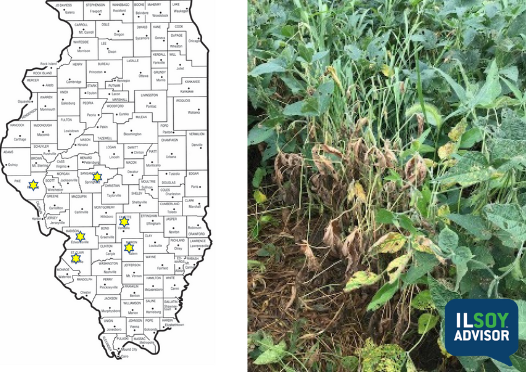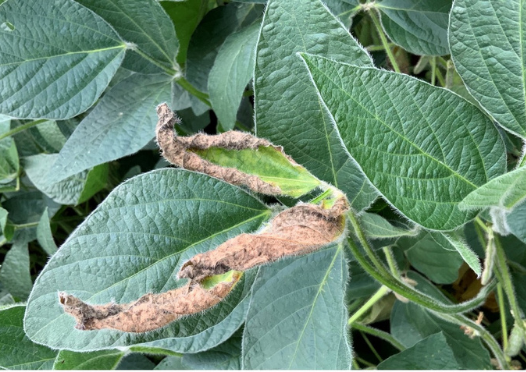ILSOYADVISOR POST
Agronomics: Soaked Soybeans: What to Expect
Major weather events seem to be more common including rainfall that exceeds 2 or 3 inches and maybe hits 6 to 8 inches, high winds or tornadoes, excessive heat /drought or even abnormal cold during the season. We have been experiencing more frequent weather events the past few years and those can have an impact on the crop.
But what happens when you get 6 to 8 inches of rain in one fell swoop, like what fell in central Illinois last weekend? On upland soils with slopes, all this water will run off, carrying soil and nutrients along with it. However, on lowland, flat areas so common in Illinois, the water will pool and stand until it can run off or infiltrate, and hopefully the field is lined with tile to help with faster drainage.
So what is the long-term impact of super-saturated soils on soybean plants? When soils become saturated and remain saturated because of poor drainage, big rain events or continual rainfall, the pore space fills up with rain and forces the air out of the soil. Roots can’t live without oxygen.
At the seed and young seedling stage, plants can tolerate no more than about three days without air before dying. Taller plants with established root systems that penetrate three feet or more can survive up to a week. If it rains excessively, it takes time for water to infiltrate and move down through the soil, so the water will remain standing on the surface. And remember, soils can hold a lot of water, about two inches per foot of soil or 12 inches in a 6-foot profile. And while the top one to two feet of soil might be saturated and devoid of air, the soil down below will not be, and roots can still pull oxygen out of that root zone to survive.
When flooding occurs for three or more days, carbon dioxide builds up in the soil and roots die or are damaged. If the roots are white when rubbed after a few days, they are okay. If they turn brown and become necrotic, they are dead or dying, and the plants will eventually die. When root systems are only partially damaged, plants will be stunted and keep most of their leaves, but wilt when weather is hot. Plants eventually will reroot and continue to grow. These can still yield if the weather remains cool and moist because of soybeans’ compensatory nature.
Another concern is root rots from Rhizoctonia or Phytophthora, two water molds that thrive in saturated soil conditions and warm soil, and will grow and infect soybeans. Root rots can be seen on the root after a few days of continual saturation. The brown necrotic roots you may find can be due either to root death or mold infections. To confirm it is a root rot, send a sample to the University of Illinois Diagnostic Clinic.
Nodules and rhizobia need access to oxygen, too, and also will die in saturated soils. So expect to lose some nodules during an extended saturation phase at a time when nodulation and nitrogen fixation begins to wane.
Excessive rains seem more common today. Your management options are having good soil structure with adequate tile drainage to remove water as quickly as possible, as well as tactics to maintain good plant health so the crop can recover more quickly. Otherwise all you can do is wait for the water to drain off or down through the soil.
Agronomist Dr. Daniel Davidson posts blogs on agronomy-related topics. Feel free to contact him at djdavidson@agrwrite.com





Comments
Add new comment